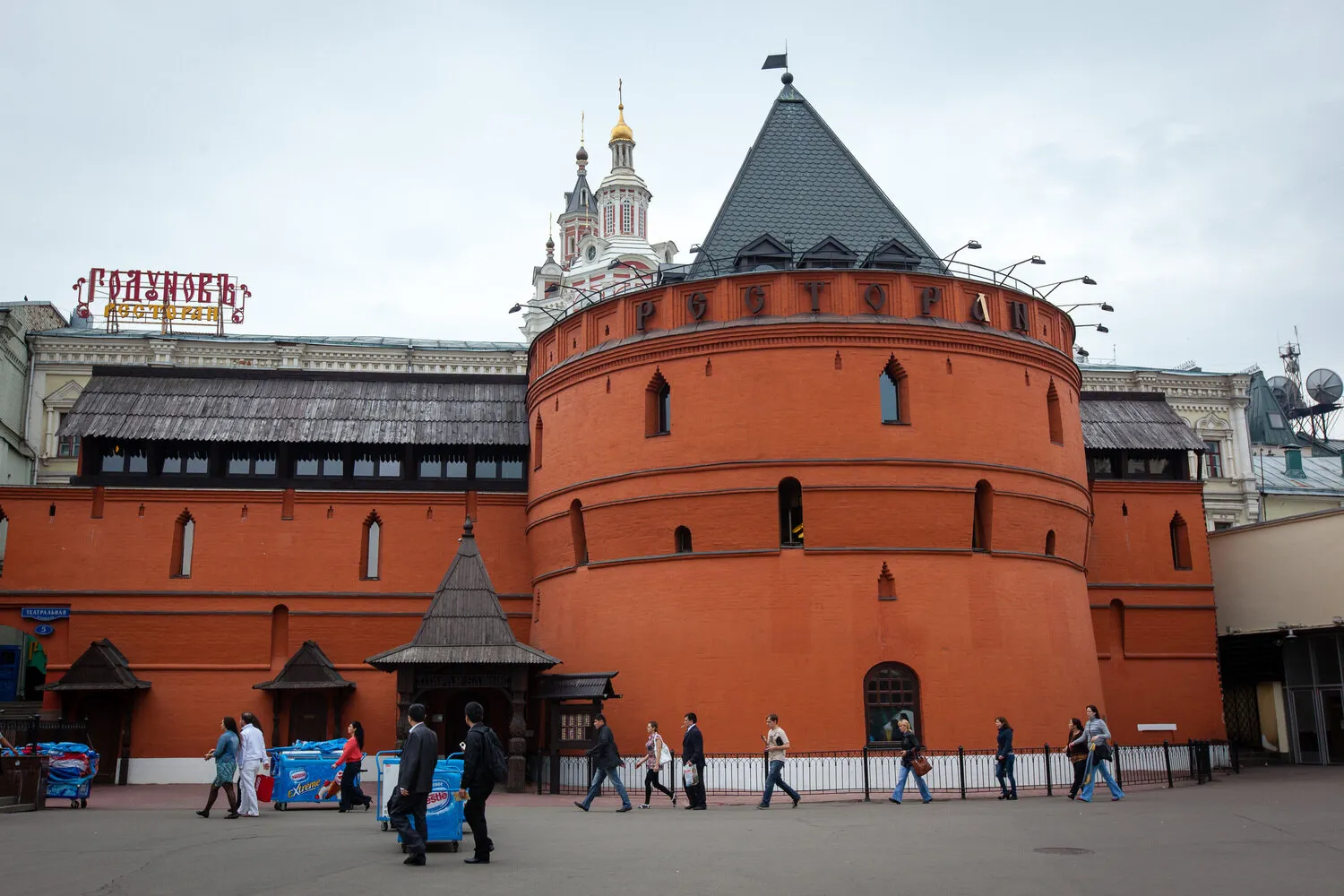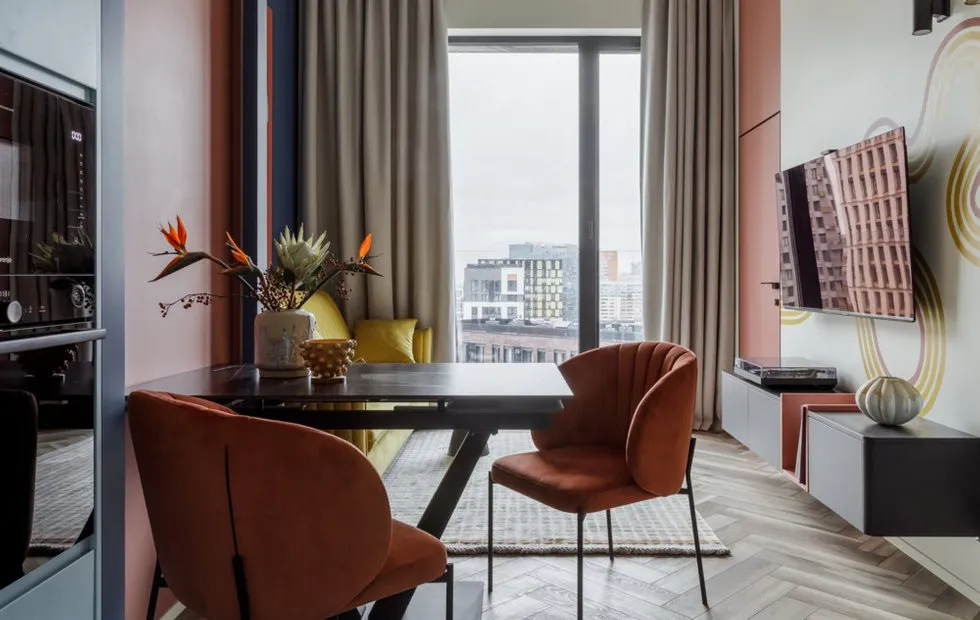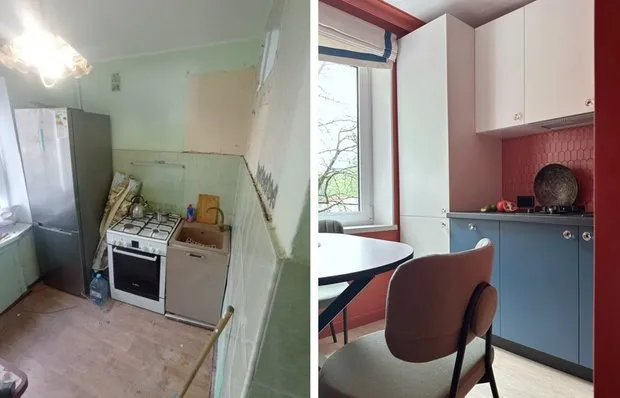There can be your advertisement
300x150
China Town: Why the Main Trading Quarter Was Named After Celestial Kingdom
From a medieval trading settlement to a modern business district
Every day thousands of Muscovites pass through the China Town metro station, but few think about the strangeness of its name. Why does Moscow's historical center, where Russian merchants traded long before Chinese goods arrived in Russia, bear the name of a distant Asian country? The answer to this riddle takes us back to the 16th century, when the word 'China' meant something entirely different than we think today.
Main points from the article:
- The name 'China Town' has nothing to do with China — it is a distorted Old Russian word 'kita' (fence, fortification);
- The district emerged in the 14th century as a trading settlement beyond the Kremlin walls;
- It housed the main commercial center of the Moscow state — Red Square and trading rows;
- During Soviet times, parts of China Town were demolished, but the remaining streets still preserve a merchant atmosphere;
- Today it is one of Moscow's most expensive business districts.
Kita, Not China: A Linguistic Puzzle
It's time to dispel the main myth. China Town was not named after a distant Eastern country. In Old Russian, the word 'kita' meant a fence of stakes and branches used to reinforce earthworks. These fortifications surrounded the trading settlement that grew near the Kremlin walls in the 14th–15th centuries.
Over time, 'kita' evolved into 'kitai', and eventually merged with the name of the country. Linguists still debate its exact etymology, but most agree that any connection to Celestial Kingdom is coincidental.
There's also an alternative theory. Some historians believe the name comes from Italian 'citta' — city. In the 16th century, Italian architects served at Ivan the Terrible's court and may have referred to this trading quarter as such. However, this theory is less popular among scholars.
The third version links the name to the Tatar word 'katay' — a fortified place. Given that Moscow was under the Golden Horde for a long time, such borrowing is quite possible.
From a princely settlement to a merchant district
The history of China Town begins in the 14th century when Moscow princes decided to expand trading areas beyond the cramped Kremlin. The first shops appeared where today's Red Square is — then it was called Torzhok or Pozhar (from 'pozhar' meaning burned-out place).
Ivan III ordered the relocation of all trading rows from the Kremlin to Red Square at the end of the 15th century. The decision was practical: the fortress became too crowded, and merchants created noise and chaos near the grand prince's quarters.
Under Ivan the Terrible, the settlement was surrounded by a stone wall. Construction lasted from 1535 to 1538 under the direction of Italian architect Petrok Malyy. The wall was impressive — up to 6 meters thick and 14 meters high. For the 16th century, it was a serious fortification.
Inside the walls, a true trading city formed. Here were not only shops but also warehouses, workshops, and inns. The main street — Nikolskaya — led to the Nikolsky Gates and was lined with trading rows.
 Photo from gorbilet.com
Photo from gorbilet.comRed Square as a trading center
Today, Red Square is associated with parades and politics, but for centuries it was Russia's main trading center. Here everything was sold — from Siberian furs to foreign spices.
Trading rows were built by commodity type. In the Cloth Row, textiles were sold; in the Meat Row — meat and fish; in the Bread Row — grain and flour. There was even a flea market where secondhand goods were sold — an early version of today's second-hand stores.
The wealthiest merchants rented spaces in the Upper Trading Rows — stone galleries built in the 18th century. These rows still exist today, though now they house GUM.
Trading wasn't limited to daytime. In the evenings, fires were lit on the square and merchants continued working by flame light. Foreign travelers wrote that Moscow's Red Square never slept at night.
Special attention was paid to book trading. On Nikolskaya Street, bookshops sold both religious and secular literature imported from Europe. Prices were high — a good book cost as much as a cow.
Merchant dynasties and their mansions
In the 17th–18th centuries, entire merchant clans formed in China Town. The Struganovs, Golitsyns, Yusupovs — these names echoed throughout Russia.
Merchants built not only shops but also residential houses in China Town. The Romanovs' mansion on Varvarka (now a museum) shows how Moscow's nobility lived in the 16th–17th centuries. Thick stone walls, small windows, tile stoves — all created the distinctive atmosphere of merchant life.
The Struganov family owned an entire quarter on Ilyinka. Their house was a true palace with grand halls, a private church, and extensive warehouses. The Struganovs traded salt and furs, but their main wealth came from Ural mines.
An interesting detail: many merchant families kept bears in their homes. This was considered a sign of wealth and power. Bears were usually chained in the courtyard, entertaining guests with tricks.
Merchant women also played a role. Often they managed the business while their husbands traveled to fairs. Some even founded their own trading houses and competed successfully with men.
Revolution and Soviet demolition
1917 marked a turning point for China Town. The new regime declared private trade a relic of the past, and trading rows were seen as symbols of capitalist exploitation.
In the 1920s, many historical buildings were demolished. The Resurrection Gates, Kazan Cathedral, and most of the trading rows on Nikolskaya disappeared. In their place arose Soviet institutions and typical administrative buildings.
Especially hard hit was Zaryadye — the oldest part of China Town. Dozens of churches and historic houses were demolished, replaced by plans for the grand 'Russia' hotel. The project was finally realized in the 1960s, though the hotel turned out so unattractive that it was demolished in 2006.
Still, some things were preserved. The Boyar Palaces of the Romanovs, St. George's Church on Pskovskaya Hill, and the Old Railway Station building survived all historical cataclysms.
Underground secrets and archaeological discoveries
Modern excavations in China Town regularly uncover surprises. Underground remain the foundations of medieval buildings, ancient pavements, and even entire cellars of merchant houses.
During the construction of the Revolution Square metro station in the 1930s, workers discovered an underground passage connecting the Kremlin to Nikolskaya Street. Legends say that this tunnel was used by tsars for secret visits to merchants.
In the 1990s, during Red Square renovations, archaeologists found fragments of a 16th-century pavement. It turned out that the square was paved with white stone — from which came the expression 'white-stone Moscow'.
Recently, medieval minting facilities were found on Varvarka. Silver coins — the main currency of the Moscow state — were minted here. The discovery confirmed that China Town was indeed the financial center of the country.
Some underground passages remain unexplored. It is said that beneath the Historical Museum lies a system of tunnels connecting China Town to the Kremlin, but access is restricted — too many state secrets.
Modern China Town: Offices in place of shops
Today, China Town is one of Moscow's most expensive business districts. Office rent here costs as much as an apartment in a residential area, but companies are willing to pay for the prestige of being located in history's heart.
In former merchant mansions now reside banks, law firms, and consulting agencies. Properties with views of Red Square are especially sought after — these offices rent for astronomical prices.
The paradox is that China Town has again become a trading center, but now it trades services instead of goods. Financial advice, legal support, PR — all modern equivalents of what merchants did five centuries ago.
The district also retains its international character. Just as traders once came here from Byzantium, Persia, and German lands, foreign companies' representatives now work in the area.
Of course, there are downsides. In the evenings and on weekends, China Town nearly dies out — all offices close, leaving streets empty. The district has become a 'sleeping quarter in reverse': life bustles during the day, but silence and peace reign at night.
From a medieval trading settlement to a modern business district — China Town has traveled an incredible path, preserving one thing: entrepreneurship and commerce. Though the name still confuses tourists, history proves that geography of trade matters more than geography on a map. Here in Moscow's heart, for seven centuries passions have flared around humanity’s main activity — the exchange of goods, services, and ideas.
Image from gorbilet.com
More articles:
 Trendy Lighting Fixtures That Will Change the Atmosphere of Your Home: 10 Finds
Trendy Lighting Fixtures That Will Change the Atmosphere of Your Home: 10 Finds What Was Trendy in Home Renovation Five Years Ago, But Now Looks Outdated
What Was Trendy in Home Renovation Five Years Ago, But Now Looks Outdated Where Premium Interior Design Begins: How Architects Plan Comfort Down to the Smallest Details
Where Premium Interior Design Begins: How Architects Plan Comfort Down to the Smallest Details Myth or Truth: Expensive Repair Lasts Longer Than Cheap One
Myth or Truth: Expensive Repair Lasts Longer Than Cheap One Before and After: How We Transformed a 6 sqm Kitchen in a Khrushchyovka on a Budget
Before and After: How We Transformed a 6 sqm Kitchen in a Khrushchyovka on a Budget How to Organize Space in a Small Apartment: 7 Great Ideas from the Project
How to Organize Space in a Small Apartment: 7 Great Ideas from the Project Designing Khrushchyovka: 5 Great Projects to Note
Designing Khrushchyovka: 5 Great Projects to Note How to Remove Dust from Home for a Month: Effective Method That Works
How to Remove Dust from Home for a Month: Effective Method That Works